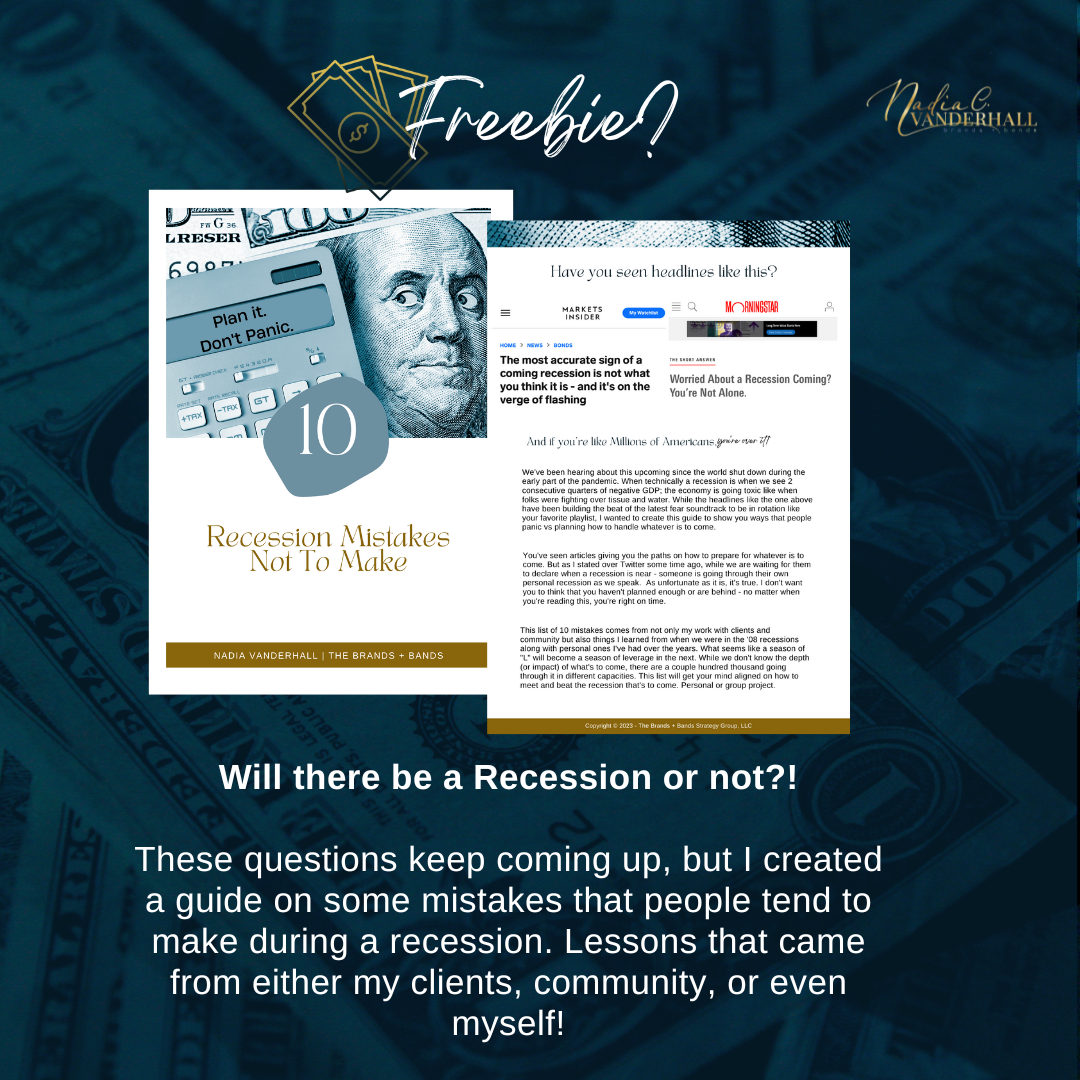[Break] In Case Of Emergency: Rebuilding Your Emergency Fund
If you have been trying to get your money aligned, you probably heard about “Emergency Funds”. These types of funds are to help buffer any loss of income no matter due to an illness or your job starts acting ill - leaving you without a job/reduced hours. They are also in the family of sinking funds - which are saving buckets that you save for separate things at the rate that you deem to fit your budget/expenses. Typical common examples include car repairs, home repairs, medical bills, a loss of income, or ________.
The pandemic has made life do life a bit too close to the sun. Inflation has really impacted the way that some of us have to live. While things have been happening since the beginning of time, it seems like money has become more screwed than a Texas song. The amount of money that people make vs the bills/expenses/life vs inflation has been a tug of war for people. Between eggs costing $8-10 at the height of inflation companies that aren’t traditionally impacted by inflation are adding those charges onto your payments.
Some people are conflicted about how much money should be within their emergency/opportunity fund. Typically, most experts believe you should have enough money in your emergency fund to cover at least 3 to 6 months' worth of living expenses. Pull your bank statements or receipts as I call them. Conduct an ‘Audit” of your budget vs your expenses. Meaning, what do you budget for and compare it to what you actually spend? This will not only give you insight into how much to save but also if your budget is working. That 3-6-9+ month build should be done in phases. You know the grand number, now work your way backward. Based on your budget and plan, you will then know if your timeline will work or become a tussle (a mess). For this type of saving, I would always recommend an HYSA. You’re stacking, so you should get a stronger kickback for saving in these types of accounts vs a regular savings account. You want accumulation, which HSYA/CDs do. With regular savings accounts, you’re seeking accessibility. Plan your savings accordingly to your goals.
The influx of people opening credit cards, pulling from their 401K/Retirement, doing loans with high-interest rates, loans, or cash pulls from their life insurance policies - the buffer is bigger than many fear to imagine. While I don’t judge, I’m sad to see this playing out the way it is. And unfortunately at the rate that we see of not only inflation, greed, and layoffs - the more we are going to find people conducting any means to survive.
Over on TT, I saw this Tok of a woman stating that she had to go into her emergency savings because it was an emergency. While I don’t know the nature of the emergency, people are finding the need to “break” their emergency fund due to life popping up like Destiny’s Child from the floor.
If you’re finding yourself building your own emergency fund or tapping into it for emergencies, one of the things I want to lead you with is this: That’s what they are for. You are building the boat to get through any rough waters you may face. I’ve seen so many tweets from people upset that they had to use their emergency fund, so I wanted to not only write this saying it will be fine but to also give you some tips on how to rebuild your emergency fund at the “Rate of Return” that you need to get it to for whichever emergency would show it’s crazy head.
You know I don’t even call emergency funds, emergency funds… I call them opportunity funds. My reason for that is that- you took the time/consistency to not only save but to save towards a specific goal. That same bank account is going to be the buffer for you to better the situation you’re in. Imagine if you didn’t have that emergency fund. No matter if you hit your top goal of being fully funded or were just starting out when the newest emergency occurred - you had ‘it’ in some form or fashion. Applaud that, Applaud you.
Want to know the “Rate of Return”? Check out this:
Need more insight into what this blog article talks about? Check out the paired YT video with it. Also, ask questions in the comments
So if you’re working towards the “Rate of Return” of building back up your Opportunity/ Emergency Fund, I wanted to provide you with these tips:
Give yourself grace for having to use it in the first place. Many people replay over and over having to use the money to help the situation. Mindset when it comes to money is a big hurdle that we have to work through consistently. Your money mindset will come into play when things are good and not so good. They can position you to stay where you are or have you strive with your stacks.
Determine how much your fund was at along with how much you utilized for your emergency fund. Also, look at how long it took you to build your emergency fund in the first place. This will give you insights on how to implement rebuilding it.
Cut or revert your expenses. To rebuild your emergency fund, you may need to cut back on certain things to put effort into rebuilding your emergency fund. Maybe your fund was fully there and you already started to move that line item in your budget toward something else. Looking at your budget along with how you’re spending will give you insight on how to budget for this not-so-new savings goal along with letting you know if your budget is sound.
Ask for or look for more - money. No matter if it’s asking for more money at your job, finding another role, or looking for a side/gig cash flow - this option will never be out of sight, out of mind. When it comes to your side/gig flow - leveraging how much will it take to start, how much will it generate, and if there any upkeep cost to it. Knowing how much of it will fill the gray area is key.
Automate your “Rate of Return”. Know that you know how much you spent out of your fund, and built it back into your budget - now you can automate the transfer from your core checking account to the designated account you have for your emergency fund. The set-it-and-forget approach to money is deemed ‘lazy’ but it gives you leverage on how to stay consistent with rebuilding or building your personal banking system. Make sure to align your automation with your cash flow - paycheck or side/gig payout.
Determine the priority of your paper. By reverse engineering your “Rate of Return” by rebuilding your emergency fund - see where it falls on your other financial goals/ objectives. Knowing how with ease you can complete a goal will give you fuel to figure out the rest. Success leaves context clues. Those insights in which you crushed one goal can be used to dominate the next.
As we move into whatever this economy might show us in this newest season of “Pandemic Project”, it’s going to be critical more than ever to build sinking funds/opportunity funds to stay the course throughout any toxic tussle we could see. The way for you to realize your goals is to actually start. Along with staying consistent. Trust me you can do both - within reason of your capabilities. Do what you can until you can do what you want to.
Are you trying to get prepared for not only what we could see in the economy group project or heck buffer against your own potential recession, check out this freebie that gives you 10 Recession Mistakes you don’t want to make! Click here.





